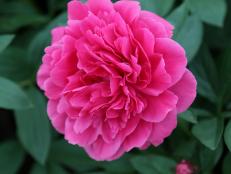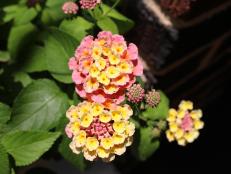Transplanting Peonies
Explore the basics of moving this springtime showstopper.

Need to transplant peony clumps? Learn the ins and outs of digging and dividing this easy-growing perennial. Transplanting peonies isn’t difficult. The most important aspect of the process is understanding why you want to transplant peonies. These old-fashioned favorites don’t like to be moved, so it’s a task that needs a definite reason—and a good one, at that.
Some reasons you might want to tackle transplanting peonies include too little sunlight reaching plants. Many times peonies fail to flower strongly when they don’t receive enough direct sunlight. As nearby trees and shrubs mature, they may limit the amount of sunlight reaching peony plants. In this situation, transplanting peonies to a sunnier site can restore the flower show.
How to Transplant, Grow and Divide Peonies
Learn how to bring these fragrant, fluffy flowers to your garden.
Another reason to be transplanting peonies is if you’re redesigning a planting border. If your garden is under renovation, lifting and moving peonies may be a necessary task. Or you may simply want to multiply your peonies and create divisions for adding to your own yard or sharing with family and friends. Sometimes peonies have been planted too closely together, and as clumps mature, they start crowding one another and need lifted and replanted.
For the most part, transplanting peonies is a job that doesn’t usually need done for 10 to 15 years. The best time of year for transplanting peonies is September. Clip leafy stems back to near ground level—2 to 3 inches tall. Use a sharp spade to dig beneath the peony clump. Start digging about a foot away from the stems. As you dig around and beneath plants, try to cut as few roots as possible.
After loosening soil, lift the peony clump from the hole. Place it on a tarp. Gently shake the peony plant so soil falls away from roots. Divide the peony roots into sections or divisions. Each division needs to have three to five eyes or growing points. Eyes are the places on the roots that produce stems and leaves.
As you remove soil from peony roots, use a sharp knife to cut out any soft or bad spots on the roots. Allow root pieces to air dry and form a callus or hard layer before planting. The callus helps prevent root rot after planting. Dusting peony roots with fungicide also helps reduce the incident of rot.
Choose a planting site with full sun (six to eight hours per day), except in Southern and Southwestern regions, where afternoon shade is ideal. Dig planting holes large enough so peony divisions and roots easily fit. Plant the eyes 2 inches below the soil surface in cold regions, 1 inch in warm zones. In cold zones, add a loose winter mulch around each transplanted peony. A layer that’s 4 to 6 inches deep should prevent frost heave. Remove the mulch in early spring, before new growth appears.
After transplanting peonies, don’t expect plants to flower the following spring. You may see a few blooms the second year after planting, but it’s in the third and fourth years that flower numbers should make a comeback.















































